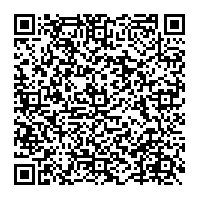The Effects of Canonity and the Authorial Weight in Translating Dickens’ Oliver Twist into Arabic Language
DOI:
https://doi.org/10.25255/jss.2019.8.4.788.804Keywords:
Authorial weight, aesthetic features, canonity, Dickens’ Oliver Twist, figurative elements, translationAbstract
This research investigates whether ‘canonity and authorial weight’ affect the translation product of Charles dickens’ Oliver Twist, and whether the source text (English) aesthetic features are maintained in the target text (Arabic). It aims to link aesthetic features with the figurative elements that are used in the translation which may express the role the authorial weight plays in the translation process. The importance of preserving the author's intended meaning of the source text (SL) in the target language is crucial. Consequently, this research uses a comparative qualitative research analysis that compares two randomly Arabic translations (TT1 and TT2) with the source text (ST) according to canonity and authorial weight features. The features of figurative language are located in the source text (ST) then compared to their counterparts in the target text (TTs). The random sample discussed thoroughly of whether it is equivalents to ST. This study is based on Nida's (1975 & 1964) dynamic or formal equivalence backgrounds. It concludes that figurative elements in translation play a major role in the fluency of the translator taking into the translators' authorial weight in the target language. It also concludes that the translation is affected by the canonity and aesthetic features used.
Downloads
References
Abdulla, A. K. (1994). The translation of style. Language, Discourse and Translation in the West and Middle East Benjamins Translation Library, 65.
Abrams, M.H. (1988). A Glossary of Literary Terms, New York: Rinehart and Winston.
Akdağ, T. & Ural, G. (2017). Analysis of figurative elements in the novel the daughter of Smyrna. [online] Wjeis.org. Available at: http://www.wjeis.org/FileUpload/ds217232/File/08.gokhan_ural.pdf
Adorno, T., Adorno, G., &Tiedeman, R. (2002). Aesthetic Theory. 2nd ed. New York: Continuum.
Alwazna, R. (2014). Ethical aspects of translation: Striking a balance between following translation ethics and producing a TT for serving a specific purpose. English Linguistics Research, 3(1).
Baalbaki, M. (2007). Oliver Twist, Beirut: Dar Al Elem Lel Malayen.
Bajnaid, A., Elyas, T., & Veltri, G. (2019). Utilizing Matrimonial Web sites Among Saudi Users: An Empirical Study. Digest of Middle East Studies, 28 (1), 164-193.
Baker. M. (1992). A coursebook on translation. London: Routledge.
Bani Abdo, I. (2017). Stylistic issues of literary translation. Arabic and English. Germany: Noor Publishing.
Bernards, J. (2017). Figurative elements in mosaics and roman painting at Algarve (Portugal). Journal of Mosaic Research.
Dickens, C. (1982). Oliver Twist. Hong Kong: Oxford University Press.
Egudu, R.N. (1979). The Study of Poetry. Ibadan: Ibadan University Press.
Gasson, A. (1998, June 1). Wilkie Collins and Charles Dickens. Retrieved February/March, 2018, from http://www.wilkie-collins.info/wilkie_collins_dickens.htm
Haan, M. D. (n.d.). The Translator's (In)visibility. Retrieved October 5, 2018, from https://www.hofhaan.nl/2011/martin-de-haan/the-translators-invisibility/
Jiang, Q. (2008). Aesthetic progression in literary translation. [online] Pdfs.semanticscholar.org.Availableat:https://pdfs.semanticscholar.org/4488/3d156e40fc696f5690a73ddc8dde0113d779.pdf
Munday, J. (2001). Introducing Translation Studies. London: Routledge.
Nida. E. (1964). Towards a science of translating: with special reference to principle and procedures involved in bible translating. Leiden, Netherlands: E.J. Brill.
Nida. E. (1975). Language Structure and Translation. California, United States: Stanford University Press.
Nord, C. (2001). Loyalty and fidelity in specialized translation. The Translator, 7(2), 185-202.
Nord, C. (1997). Translating as a Purposeful Activity. St. Jerome Publishing
Peirce, C. S., Hartshorne, C., & Weiss, P. (1932). Collected Papers of Charles Sanders Peirce. Cambridge: Harvard University Press.
Pym, A. (2012). On Translator Ethics. Benjamins Translation Library. doi:10.1075/btl.104
Shanaway, I. (2013, December 31). Chapter 1 مع ترجمة الفصل وملخص له وتمارين مجابة الصف الاول الثانوى ترم اول. Retrieved from http://shanaway.ahlamontada.com/t21321-topic
Teilanyo, D. (2007). Figurative Language in Translation: A Study of J.P. Clark’s The Ozidi Saga. Meta: Journal Des Traducteurs, 52(2), 309.
Trodd, Z. 2007. Hemingway's camera eye: the problem of language and an interwar politics of form. The Hemingway Review. 26(2), pp.7-21.
Vasilescu, R. (2015). Ethical issues in machine translation. Retrieved from https://www.researchgate.net/publication/279840673_Ethical_issues_in_machine_translation
Viehoff, R. (1986). How to construct a literary poem?. Poetics 15-3:287-306.
Wheeler, L.K. 2015. Literary vocabulary: literary terms and definitions: [Online]. [Accessed 20 February 2018]. Available from: http://web.cn.edu/kwheeler/lit_terms_C.html
Williams, J., & Chesterman, A. (2014). The Map A Beginners Guide to Doing Research in Translation Studies. Hoboken: Taylor and Francis.
Zhang, J. (2008). Images, imagination and image-gestalt in English-Chinese literary translation. Translation Journal, 12(2).










 a Creative Commons Attribution 4.0 International License.
a Creative Commons Attribution 4.0 International License.

